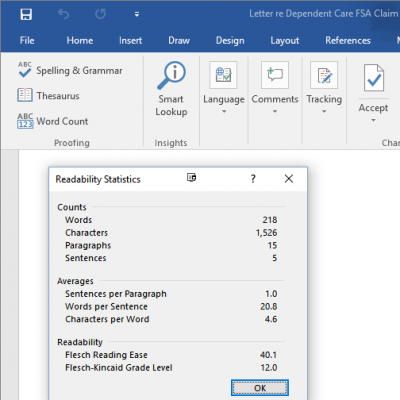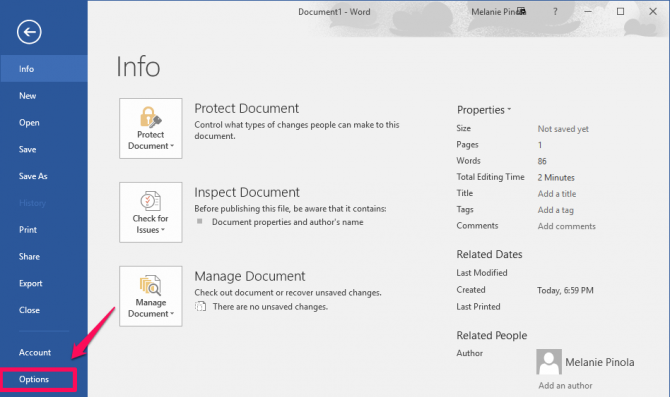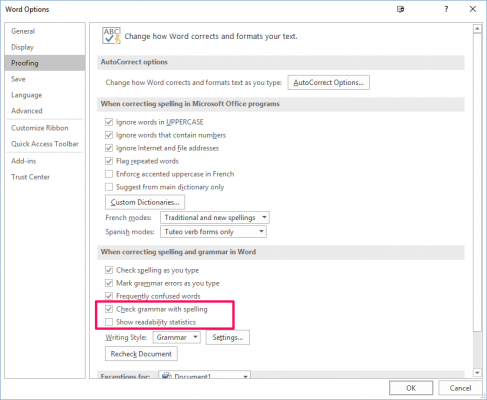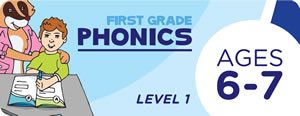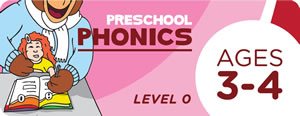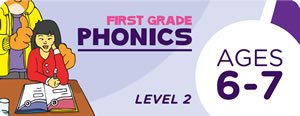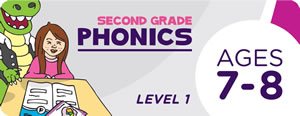Word for Microsoft 365 Word for Microsoft 365 for Mac Word 2021 Word 2021 for Mac Word 2019 Word 2019 for Mac Word 2016 Word 2016 for Mac Word 2013 More…Less
When Word finishes checking the spelling and grammar and errors corrected, you can choose to display information about the reading level of the document, including readability scores according to the Flesch-Kincaid Grade Level test and Flesch Reading Ease test. Understand readability scores.
-
When you’re using Word for Microsoft 365, you can quickly see readability statistics for your document.
-
Open your Word document.
-
Select the Home tab.
-
Choose Editor, and then go to Document stats.
-
A dialog box will appear letting you know Word is calculating your document stats. Choose OK.
-
Word will open a window that shows you information about the statistics and reading level of your document.
Important: This feature is only available for Microsoft 365 customers receiving updates on the Current Channel. If you have questions about what update channel you’re currently on, reach out to your organization’s IT admin or see Overview of update channels for Microsoft 365 Apps.
-
Go to File > Options.
-
Select Proofing.
-
Under When correcting spelling and grammar in Word, make sure to select the Check grammar with spelling check box.
-
Select Show readability statistics.
-
Return to your document.
-
Select Spelling & Grammar.
-
Correct or ignore any spelling or grammar corrections, and then Word opens the Readability Statistics window with information about the reading level of the document.
-
Open your Word document.
-
On the browser toolbar, select Word > Preferences.
-
Choose Spelling & Grammar.
-
Under Grammar, select Check grammar with spelling and Show readability statistics.
-
In your Word document, select Review > Spelling & Grammar.
-
Correct or ignore any spelling or grammar corrections, then Word will open the Readability Statistics window with information about the reading level of your document.
Understand readability scores
Each readability test bases its rating on the average number of syllables per word and words per sentence. The following sections explain how each test scores your file’s readability.
This test rates text on a 100-point scale. The higher the score, the easier it is to understand the document. For most standard files, you want the score to be between 60 and 70.
The formula for the Flesch Reading Ease score is:
206.835 – (1.015 x ASL) – (84.6 x ASW)
where:
ASL = average sentence length (the number of words divided by the number of sentences)
ASW = average number of syllables per word (the number of syllables divided by the number of words)
This test rates text on a U.S. school grade level. For example, a score of 8.0 means that an eighth grader can understand the document. For most documents, aim for a score of approximately 7.0 to 8.0.
The formula for the Flesch-Kincaid Grade Level score is:
(.39 x ASL) + (11.8 x ASW) – 15.59
where:
ASL = average sentence length (the number of words divided by the number of sentences)
ASW = average number of syllables per word (the number of syllables divided by the number of words)
The languages that you use in a document can affect how your Office program checks and presents readability scores.
-
If you set up Word to check the spelling and grammar of text in other languages, and a document contains text in multiple languages, Word displays readability statistics for text in the last language that was checked. For example, if a document contains three paragraphs — the first in English, the second in French, and the third in English — Word displays readability statistics for the English text only.
-
For some European languages within an English document, Word displays only information about counts and averages, not readability.
Need more help?
|
|
|
|
|
|
|
|
|
|
|
|
|
|
|
|
|
|
|
|
|
|
|
|
|
|
|
|
|
|
|
|
|
|
|
|
|
|
|
|
|
|
|
|
|
|
|
|
|
|
|
|
|
|
|
|
|
|
|
|
|
|
|
|
Many language learners are eager to read English books in their original language but they find it too difficult as most often the language in books they choose is way beyond their level. If learners start with graded readers they won’t have to stop and look up lots of unknown words in the dictionary and reading a book will become an enjoyable part of language learning.
What are Graded Readers?
Graded Readers are books of various genres, from a range of prestigious authors from around the world. They are specially simplified for learners of foreign languages of all levels from beginners through to advanced. The language is graded for vocabulary, the complexity of grammar structures and also by the number of words. Graded Readers can be great resources for extensive reading.
Where can I find the right Graded Reader?
Choosing the right book depends on what your students enjoy reading. Do they enjoy classics, detectives, thrillers? Students can also choose a book depending on how long the book is and the level (it should be slightly higher than their most comfortable level. This will ensure that they understand the text, but also challenge them to learn new words and phrases).
There is a number of websites which help to choose the right reader:
- Pearson English Graded Readers
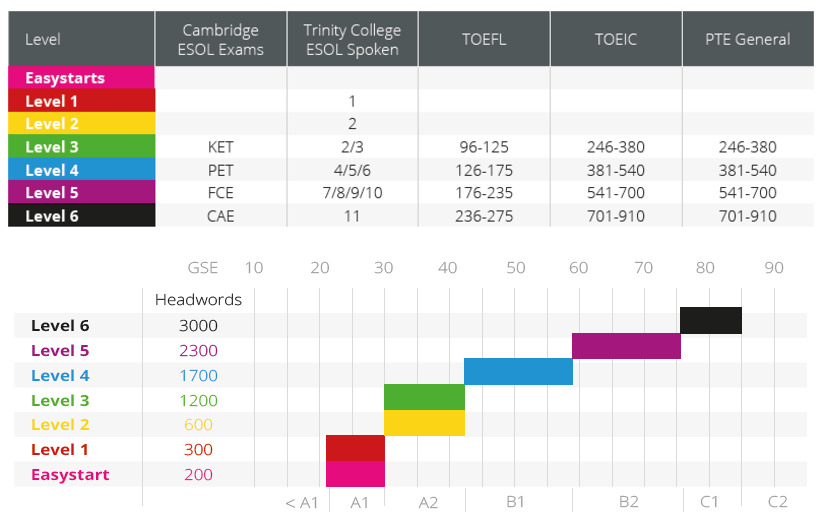
Here learners can take a placement test if they are not sure of their level and then choose the right book.
Readers for Teens and Adults are divided into Pearson English Readers (7 levels) and Active Readers (5 levels) and include stories, classic novels and plays, modern popular fiction and non-fiction titles. Most English Readers and Active Readers come with an interactive CD-ROM with complete audio recordings and downloadable resources for teachers. Use Advanced search to find the right book to students’ levels and interests.
2. Macmillan readers
The Macmillan Graded Readers series is published at six levels – Starter, Beginner, Elementary, Pre-intermediate, Intermediate and Upper Intermediate. On the website, you can find a short summary of the book, the level, the number of pages, the sample pages and you can also order the shipping to your address.
3. Oxford Graded Readers
Oxford’s library has a huge collection of graded readers. There are six CEFR levels with nine sub-levels (e.g. Intermediate Plus, Pre-Primary), six media types (paperback, ebook, iOS app etc.), three types of English and 11 genres. To find the right book, use the search tool.
4. Collins English readers
On the website, you can check the level of English and find two collections of ELT Readers: Agatha Cristie and Amazing People. You can filter the books according to the format (paper, audio or ebook), the price and sort A-Z, price low to high and new to old.
Recommended books
A1: A Tale of Two Cities
The action in the book takes before and during the French Revolution. Jarvis Lorry is travelling to Paris to reunite Dr Manette with his long-lost daughter Lucie. … When Darnay returns to Paris to save a former servant, he is arrested by the revolutionaries and sentenced to death.
Anna and the Fighter
Anna is making her first trip alone by train, to visit her aunt. she is nervous and excited. The journey is long and tiring and she falls asleep. She wakes up to find that she has missed her station and that she is sharing the train compartment with a dangerous- looking man.
A2: The Secret Garden
Mary Lennox goes to live with her uncle in a big old house in the country. There are many gardens around the house. One day Mary finds a garden that has high walls and no door. What is the secret of the garden?
Sherlock Holmes: More Short Stories
Sherlock Holmes is famous around the world. When the police cannot solve a crime, they turn to Holmes. He never misses a clue, and when he looks carefully at a person, he can understand everything about them. These are two of the best Sherlock Holmes stories. In ‘The Dead Coachman’, Holmes investigates a burglary and a murder while he is staying in the countryside with his friend Doctor Watson. In ‘The Last Mystery’, Holmes is in danger from the evil Professor Moriarty, who is as clever as the detective himself. They are both ready to fight to the death. But who will win?
B1: As the Inspector Said and Other Stories
The murder plan seems so neat, so clever. How can it possibly fail? Murder plans that go wrong, a burglar who makes a bad mistake, a famous jewel thief who meets a very unusual detective…
About a Boy Book
Will Freeman wants an easy life with no responsibilities. But then he meets Marcus – an unusual twelve-year-old boy with serious problems. About a Boy is a modern classic — a very funny story about a very serious subject: love. It’s also a popular movie starring Hugh Grant.
B2: Not Without You
It is 2088, and life in the city where Sala lives is hard: it’s overcrowded, there are no jobs, and no one can leave, because the world outside is contaminated. Sala is lucky, because she has Cham, and they love each other. But when Cham gets the chance for a new future, and Sala begins to make some extraordinary discoveries, will they agree about how to move forwards and what to do with their lives?
Emma
Emma Woodhouse, beautiful, clever and rich, has no wish to marry, but she enjoys making matches for those around her. It was Emma who found the perfect husband for her governess Miss Taylor. So when her dear friend Mr Knightley tells her that she should let people choose their own husbands and wives, she will not listen. But does Emma really understand people as well as she thinks? And is she even right about her own feelings, when she says that she will never fall in love?
Graded readers are an incredible way for students to do the best outside the classroom to improve their skills. Find out more about motivating to read in this article
What books do you think should be read by students of different levels?
VocabularySpellingCity‘s first grade reading word lists cover a wide range of levels to support all of the students in your classroom with reading vocabulary activities and practice. Linked to classic children’s literature and books from the Common Core State Standards, our 1st grade reading sight word lists provide students with the chance to practice new words in interactive online vocab games and free printable reading worksheets. Read MoreRead Less
Reading at “Just Right” Levels
Providing new readers with books that are at a level that provides just enough challenge and not too much frustration is key to developing a long lasting interest in reading. VocabularySpellingCity lists three popular reading level measurement systems for each book on the 1st grade literature list. Knowing the reading levels of the books will help you match word lists to your grade one curriculum. In first grade, the lists for independent reading are words that the students know and understand but are still learning to read. Audio supports such as reading and spelling each word from the list and audible sentence cues help beginning readers learn their words quickly.
Spelling is an integral part of learning how to read, students benefit greatly from incorporating spelling into beginning reading instruction. Easily incorporate spelling into your reading instruction by importing your word lists or pairing a ready-made first grade spelling list with over 35 learning games and activities.
Independent Reading and Read-Aloud Books
VocabularySpellingCity provides word lists for read-aloud chapter books to help students expand their vocabulary and their exposure to literature. When used in conjunction with simpler, beginning reader books, students can continue to build their aural vocabulary as they build a reading vocabulary. Using the seven read-aloud texts on the 1st grade list with VocabularySpellingCity’s games and activities will help your first graders expand their aural vocabulary.
Common Core State Standards for Literature
VocabularySpellingCity literature word lists for first grade include six books and four poems from the Common Core State Standards literature list. Arnold Lobel’s classic, Frog and Toad, can help students build their vocabulary to meet Language Requirement 1.6: “Use words and phrases acquired through conversations, reading and being read to, and responding to texts, including using frequently occurring conjunctions to signal simple relationships (e.g., because).” The same book provides a good opportunity to practice Reading Literature 1.4: “Identify words and phrases in stories or poems that suggest feelings or appeal to the senses.” VocabularySpellingCity can help your students practice reading and memorize new grade 1 vocabulary words while having fun.
Is your writing smarter than a fifth grader’s? Your report, manual, or any other kind of document should match the reading level of your intended audience. You don’t want to compose an article for graduate students that is written at an elementary school level. In a couple of clicks, you can find the readability score in Microsoft Word and make sure the reading level is on point.
Microsoft Word can display the readability score for both the Flesch Reading Ease and Flesch-Kincaide Grade Level formulas, two of the most commonly used and accurate measures of readability. The higher the Flesch Reading Ease score, the easier it is for most people to understand the document. The Flesch-Kincaide Grade Level score represents the number of years of education generally required to understand the text.
To quickly see the reading level of your Word document or selection of text:
1. Go to File > Options.
2. In the Proofing tab, check the following options:
- Check grammar with spelling
- Show readability statistics
3. Click OK.
4. Click to Review > Spelling & Grammar to check your document for spelling or grammatical errors and also see the readability level of your document.
With these settings changes, you’ll see more readability statistics for your Word document every time you check the document’s spelling and grammar.
Microsoft Word Tips
- Previous Tip
- Next Tip
- Show Formatting Marks in Microsoft Word
- See All of Microsoft Word’s Keyboard Shortcuts
- Select All Text with Similar Formatting in Microsoft Word
- Create Table Templates in Microsoft Word
- Use Microsoft Office’s Lorem Ipsum (Random Text) Generator
- Add a Table of Contents in Word
- Co-Edit a Document in Word
- Add or Remove Page Breaks in Word
- Put Microsoft Office into Touch-Friendly Mode
- Compare Docs Side-by-Side
- Configure Spell Check and Autocorrect
- Remove Double Spaces After a Period
- Compare and Combine Two Docs
- Copy and Paste Text from Multiple Locations
Get instant access to breaking news, the hottest reviews, great deals and helpful tips.
The 1st Grade Level 1 Reading Program features a review of all the short vowels, beginning and ending consonants. Your children will learn words with the S blends, consonant digraphs ch, sh, th, wh and ph. They will also learn the soft C and G sounds.
Featuring Worksheets for First Grade Level 1
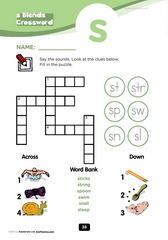
S blends crossword
Learning S blends activity puzzle
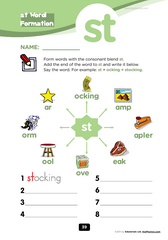
st blend word building
Learning st blend by building words
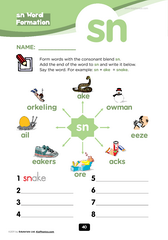
sn blend word building
Learning sn blend by building words

str blend word building
Learning str blend by building words
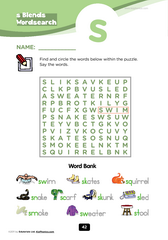
s blends word search
Learning st blend by doing this puzzle
Featuring 1st Grade Phonics Games
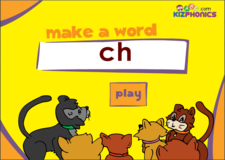
https://www.kizphonics.com/wp-content/uploads/2012/04/ch_game_225x160.png
160
225
KizPhonics
https://www.kizphonics.com/wp-content/uploads/2014/06/kizphonics-logo.png
2012-04-18 01:19:252023-02-28 13:29:11Digraph /ch/, Phonics game to practice the consonant digraph /ch/
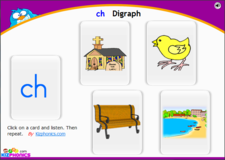
Digraph ch, Phonics Flashcards
Practice the digraph ‘ch’ using these interactive phonics flipcards.…
https://www.kizphonics.com/wp-content/uploads/2012/04/ch_card_225x160.png
160
225
KizPhonics
https://www.kizphonics.com/wp-content/uploads/2014/06/kizphonics-logo.png
KizPhonics2012-04-18 01:16:312020-03-30 19:12:24Digraph ch, Phonics Flashcards
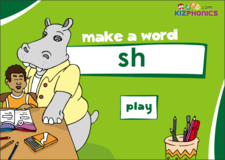
https://www.kizphonics.com/wp-content/uploads/2012/04/sh-game_225x160.png
160
225
KizPhonics
https://www.kizphonics.com/wp-content/uploads/2014/06/kizphonics-logo.png
KizPhonics2012-04-18 01:11:332020-05-18 11:50:53Digraph /sh/, Phonics game to practice the consonant digraph /sh/
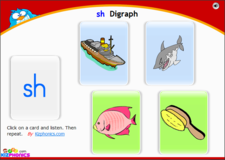
Digraph sh, Phonics flipcards
Practice the sound of the digraph sh as in ship. Click on a card…
https://www.kizphonics.com/wp-content/uploads/2012/04/sh-card_225x160.png
160
225
KizPhonics
https://www.kizphonics.com/wp-content/uploads/2014/06/kizphonics-logo.png
KizPhonics2012-04-18 01:09:472020-03-30 19:14:49Digraph sh, Phonics flipcards
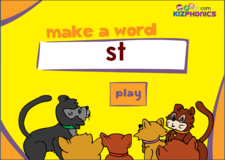
st beginning consonant S blend, phonics game
Learn and practice the st consonant blend. Listen, then drag…
https://www.kizphonics.com/wp-content/uploads/2012/04/st_game_225x160.png
160
225
KizPhonics
https://www.kizphonics.com/wp-content/uploads/2014/06/kizphonics-logo.png
KizPhonics2012-04-18 00:54:212020-04-02 14:24:11st beginning consonant S blend, phonics game
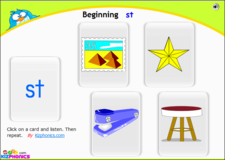
st beginning consonant S blend, phonics flashcards
Learn and practice the beginning st consonant blends using these…
https://www.kizphonics.com/wp-content/uploads/2012/04/st-card_225x160.png
160
225
KizPhonics
https://www.kizphonics.com/wp-content/uploads/2014/06/kizphonics-logo.png
KizPhonics2012-04-18 00:51:092020-03-30 19:15:40st beginning consonant S blend, phonics flashcards
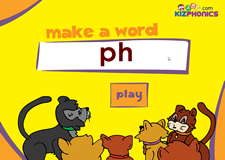
Consonant Digraph ‘ph’ Phonics Activity
Learn and practice the consonant digraph ‘ph‘ using this…
https://www.kizphonics.com/wp-content/uploads/2012/04/ph1.png
160
225
KizPhonics
https://www.kizphonics.com/wp-content/uploads/2014/06/kizphonics-logo.png
KizPhonics2012-04-17 06:10:582020-04-02 14:24:34Consonant Digraph ‘ph’ Phonics Activity
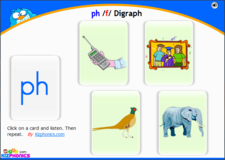
Consonant Digraph ‘ph’ Phonics Flashcard
Learn and practice the consonant digraph ‘ph‘ using this…
https://www.kizphonics.com/wp-content/uploads/2012/04/ph_card_225x160.png
160
225
KizPhonics
https://www.kizphonics.com/wp-content/uploads/2014/06/kizphonics-logo.png
KizPhonics2012-04-17 05:58:552020-03-30 19:13:32Consonant Digraph ‘ph’ Phonics Flashcard
Featuring 1st Grade Phonics Videos
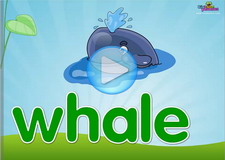
‘wh’ digraph Phonics Video
This is a phonics video on the ‘wh’ digraph. Learn to sound out,…
https://www.kizphonics.com/wp-content/uploads/2013/08/wh-digraph.jpg
160
225
KizPhonics
https://www.kizphonics.com/wp-content/uploads/2014/06/kizphonics-logo.png
KizPhonics2013-08-03 13:29:412013-08-04 12:17:38‘wh’ digraph Phonics Video
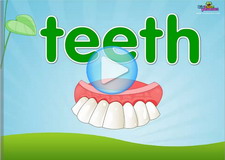
‘th’ ending digraph Phonics Video
This is a phonics video on the ‘th’ ending digraph. Learn to…
https://www.kizphonics.com/wp-content/uploads/2013/08/th-ending-digraph.jpg
160
225
KizPhonics
https://www.kizphonics.com/wp-content/uploads/2014/06/kizphonics-logo.png
KizPhonics2013-08-03 13:29:322013-08-04 12:16:50‘th’ ending digraph Phonics Video
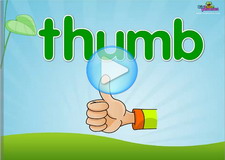
‘th’ beginning digraph Phonics Video
This is a phonics video on the ‘th’ beginning digraph. Learn…
https://www.kizphonics.com/wp-content/uploads/2013/08/th-beginning-digraph.jpg
160
225
KizPhonics
https://www.kizphonics.com/wp-content/uploads/2014/06/kizphonics-logo.png
KizPhonics2013-08-03 13:29:272013-08-04 12:15:55‘th’ beginning digraph Phonics Video
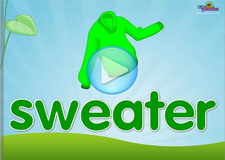
‘sw’ blends Phonics Video
This is a phonics video on the ‘sw’ blends. Learn to sound out,…
https://www.kizphonics.com/wp-content/uploads/2013/08/sw-blends.jpg
160
225
KizPhonics
https://www.kizphonics.com/wp-content/uploads/2014/06/kizphonics-logo.png
KizPhonics2013-08-03 13:29:212013-08-04 12:14:58‘sw’ blends Phonics Video
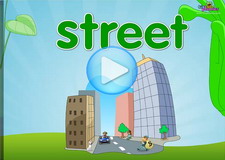
‘str’ blends Phonics Video
This is a phonics video on the ‘str’ blends. Learn to sound out,…
https://www.kizphonics.com/wp-content/uploads/2013/08/str-blends.jpg
160
225
KizPhonics
https://www.kizphonics.com/wp-content/uploads/2014/06/kizphonics-logo.png
KizPhonics2013-08-03 13:29:172013-08-04 12:13:57‘str’ blends Phonics Video

‘st’ blends Phonics Video
This is a phonics video on the ‘st’ blends. Learn to sound out,…
https://www.kizphonics.com/wp-content/uploads/2013/08/st-blends.jpg
160
225
KizPhonics
https://www.kizphonics.com/wp-content/uploads/2014/06/kizphonics-logo.png
KizPhonics2013-08-03 13:29:112013-08-04 12:12:56‘st’ blends Phonics Video
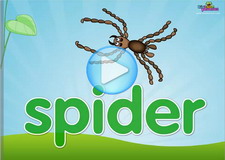
‘sp’ blends Phonics Video
This is a phonics video on the ‘sp’ blends. Learn to sound out,…
https://www.kizphonics.com/wp-content/uploads/2013/08/sp-blends.jpg
160
225
KizPhonics
https://www.kizphonics.com/wp-content/uploads/2014/06/kizphonics-logo.png
KizPhonics2013-08-03 13:29:072013-08-04 12:12:06‘sp’ blends Phonics Video
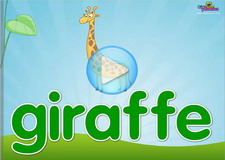
Soft ‘g’ Phonics Video
This is a phonics video on the soft ‘g’. Learn to sound out,…
https://www.kizphonics.com/wp-content/uploads/2013/08/soft-g.jpg
160
225
KizPhonics
https://www.kizphonics.com/wp-content/uploads/2014/06/kizphonics-logo.png
KizPhonics2013-08-03 13:29:012013-08-04 12:10:59Soft ‘g’ Phonics Video
Kiz Phonics iPad Apps
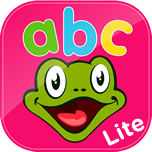
Preschool Phonics App (Phonics_Prek) Lite
https://www.kizphonics.com/wp-content/uploads/2014/01/l1-lite.png
152
152
KizPhonics
https://www.kizphonics.com/wp-content/uploads/2014/06/kizphonics-logo.png
KizPhonics2014-01-02 09:12:292020-04-21 13:22:31Preschool Phonics App (Phonics_Prek) Lite

Preschool Phonics App (Phonics_Prek)
https://www.kizphonics.com/wp-content/uploads/2013/12/l1.png
152
152
KizPhonics
https://www.kizphonics.com/wp-content/uploads/2014/06/kizphonics-logo.png
KizPhonics2014-01-02 07:50:302020-04-21 13:22:46Preschool Phonics App (Phonics_Prek)
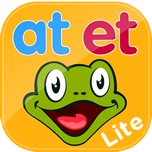
Kindergarten Level 1 Phonics App (Phonics Kinder 1) Lite
https://www.kizphonics.com/wp-content/uploads/2014/01/l2-lite.png
152
152
KizPhonics
https://www.kizphonics.com/wp-content/uploads/2014/06/kizphonics-logo.png
KizPhonics2014-01-02 06:30:162020-04-21 13:23:04Kindergarten Level 1 Phonics App (Phonics Kinder 1) Lite

Kindergarten Level 1 Phonics App (Phonics Kinder 1)
https://www.kizphonics.com/wp-content/uploads/2014/01/l2.png
152
152
KizPhonics
https://www.kizphonics.com/wp-content/uploads/2014/06/kizphonics-logo.png
KizPhonics2014-01-02 06:20:112020-04-21 13:23:19Kindergarten Level 1 Phonics App (Phonics Kinder 1)
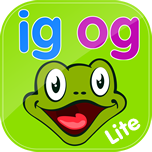
Kindergarten Level 2 Phonics App (Phonics Kinder 2) Lite
https://www.kizphonics.com/wp-content/uploads/2014/01/l3-lite.png
152
152
KizPhonics
https://www.kizphonics.com/wp-content/uploads/2014/06/kizphonics-logo.png
KizPhonics2014-01-02 06:10:092020-04-21 13:23:34Kindergarten Level 2 Phonics App (Phonics Kinder 2) Lite

Kindergarten Level 2 Phonics App (Phonics Kinder 2)
https://www.kizphonics.com/wp-content/uploads/2014/01/l3.png
152
152
KizPhonics
https://www.kizphonics.com/wp-content/uploads/2014/06/kizphonics-logo.png
KizPhonics2014-01-02 06:02:022020-04-21 13:23:52Kindergarten Level 2 Phonics App (Phonics Kinder 2)
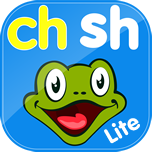
1st Grade Level 1 Phonics App (Phonics 1st Grade 1) Lite
https://www.kizphonics.com/wp-content/uploads/2014/01/l4-lite.png
152
152
KizPhonics
https://www.kizphonics.com/wp-content/uploads/2014/06/kizphonics-logo.png
KizPhonics2014-01-02 05:50:152020-04-21 13:24:451st Grade Level 1 Phonics App (Phonics 1st Grade 1) Lite

1st Grade Level 1 Phonics App (Phonics 1st Grade 1)
https://www.kizphonics.com/wp-content/uploads/2014/01/l4.png
152
152
KizPhonics
https://www.kizphonics.com/wp-content/uploads/2014/06/kizphonics-logo.png
KizPhonics2014-01-02 05:45:042020-04-21 13:25:001st Grade Level 1 Phonics App (Phonics 1st Grade 1)
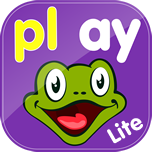
1st Grade Level 2 Phonics App (Phonics 1st Grade 2) Lite
https://www.kizphonics.com/wp-content/uploads/2014/01/l5-lite.png
152
152
KizPhonics
https://www.kizphonics.com/wp-content/uploads/2014/06/kizphonics-logo.png
KizPhonics2014-01-02 05:35:302020-04-21 13:25:141st Grade Level 2 Phonics App (Phonics 1st Grade 2) Lite

1st Grade Level 2 Phonics App (Phonics 1st Grade 2)
https://www.kizphonics.com/wp-content/uploads/2014/01/l5.png
152
152
KizPhonics
https://www.kizphonics.com/wp-content/uploads/2014/06/kizphonics-logo.png
KizPhonics2014-01-02 05:30:242020-04-21 13:25:341st Grade Level 2 Phonics App (Phonics 1st Grade 2)
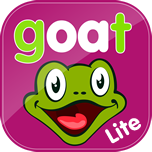
2nd Grade Level 1 Phonics App (Phonics 2nd Grade 1) Lite
https://www.kizphonics.com/wp-content/uploads/2014/01/l6-lite.png
152
152
KizPhonics
https://www.kizphonics.com/wp-content/uploads/2014/06/kizphonics-logo.png
KizPhonics2014-01-02 05:25:122020-04-21 13:25:492nd Grade Level 1 Phonics App (Phonics 2nd Grade 1) Lite

2nd Grade Level 1 Phonics App (Phonics 2nd Grade 1)
https://www.kizphonics.com/wp-content/uploads/2014/01/l6.png
152
152
KizPhonics
https://www.kizphonics.com/wp-content/uploads/2014/06/kizphonics-logo.png
KizPhonics2014-01-02 05:20:062020-04-21 13:26:032nd Grade Level 1 Phonics App (Phonics 2nd Grade 1)
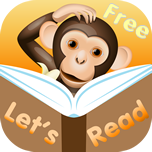
Phonics Sentence Monkey Game Lite
https://www.kizphonics.com/wp-content/uploads/2014/01/sentence-lite.png
152
152
KizPhonics
https://www.kizphonics.com/wp-content/uploads/2014/06/kizphonics-logo.png
KizPhonics2014-01-02 05:15:182020-04-21 13:26:22Phonics Sentence Monkey Game Lite
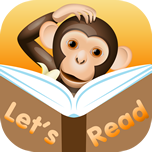
Phonics Sentence Monkey Game
https://www.kizphonics.com/wp-content/uploads/2014/01/sentence.png
152
152
KizPhonics
https://www.kizphonics.com/wp-content/uploads/2014/06/kizphonics-logo.png
KizPhonics2014-01-02 05:13:442020-04-21 13:26:33Phonics Sentence Monkey Game
Kiz Phonics Program by Level
Preschool Reading — Ages 3-4
Learning to read starts here. From as low as 3 years, your child needs to build the following skills that will prepare him/her for reading. Print Awareness and Phonemic Awareness are the hallmarks of this level. We provide the following types of resources:
Kindergarten Reading 1 — Ages 4-6
The Kindergarten Level 1 Reading Program, is suitable for kids between the ages of 4 to 6. Children will learn short vowels a & e, beginning and ending consonant sounds. The will learn how to read words, sentences and 2 short stories.
Kindergarten Reading 2 — Ages 4-6
The Kindergarten Level 2 Reading Program, is suitable for kids between the ages of 4 to 6. Children will learn short vowels i, o & u, ending and beginning consonants & digraphs. The will learn how to read words, sentences and 2 short stories.
1st Grade Reading 1 — Ages 6-7
The 1st Grade Level 1 Reading Program features a review of all the short vowels, beginning and ending consonants. Your children will learn words with the S blends, consonant digraphs ch, sh, th, wh and ph. They will also learn the soft C and G sounds.
1st Grade Reading 2 — Ages 6-7
The 1st Grade Level 2 Phonics Program features the long a & i with the silent e. Kids will learn how the silent e changes the sounds of words. This level also includes vowel digraphs ai & ay, vowel digraphs ee & ea and final y as long e.
2nd Grade Reading 1 — Ages 7-8
The 2nd Grade Level 1 Phonics Program features the long o & u with the silent e. This level also includes vowel digraphs like oa & ow, ui & ue and final y as long i. Special vowels like aw & ew will be also be learned.
Not a Member Yet? Register Now to Unlock the Wealth of this Site.
We suggest printing out these word lists, posting them on your fridge (or somewhere you and your child will see them easily and often), and making a point of using one or two at a time in everyday conversation with your child. Feeling creative? Make learning these new words into a game! The more fun you and your child have learning what these vocabulary words mean and practicing using them in conversation (even silly conversation), the better.
Academic vocabulary lists by grade level
1st grade word list
Here are the age-appropriate “big” words your first graders should learn this year.
2nd grade word list
These vocabulary words for second graders will help your child better understand what they’re reading in class.
3rd grade word list
Knowing words such as additional, example, and typical will boost your child reading and writing skills.
4th grade word list
Knowing words such as avoid, confirm, and obvious will enhance your child’s ability to read, learn, and communicate.
5th grade word list
These “hard” words are essential to your fifth grader’s reading comprehension, understanding of new concepts, and writing skills.
7th grade word list
These high-value vocabulary words for seventh graders are important for your child’s deeper understanding of meaning and context.
8th grade word list
These words are important for your child’s reading comprehension and overall understanding of new concepts across many subjects.
9th grade word list
Help your ninth grader learn these academic vocabulary words — it’ll help your teen with reading assignments, writing projects, and oral presentations.
10th grade word list
Help your teen learn these vocabulary words for tenth graders. It’ll help with assignments in every subject now — and with the SAT or ACT later.
11th grade word list
Knowing (and using!) these words will help your teen in school — and with college admissions tests and essays.
12th grade word list
Knowing (and using!) these vocabulary words will help your high school senior with schoolwork, college admissions tests, and college apps.
Do you want to improve your reading skills and become a better reader? Many English learners have this goal in mind. This guide to reading can help you.
In this guide you will learn about:
- reading and why it matters
- reading materials for English language learners
- typical tasks found in English-language reading tests
- general reading tips to become a stronger reader
- where you can find reading materials
- reading strategies for better comprehension
- common reading categories to choose from
You can also look below at the reading glossary for any words about reading that you don’t understand.
Why Read?
You probably know that even in your own language reading is regarded as important because it can be entertaining and educational, can open up new worlds and enrich your life, and can improve hand-eye co-ordination and enhance social skills.
But for learning a foreign language, in this case English, reading in that language has additional important benefits that can help you learn the language faster and more completely.
Reading is an essential skill for language learners. When your reading skills improve, your listening, speaking and writing skills improve too. Here are some of the specific reasons why English learners are encouraged to read in English:
- The constant repetition of words and patterns in reading helps you learn and remember vocabulary and grammar structures.
- Reading helps you become familiar with the rhythm of English. Over time it will start to feel natural and you will notice when a sentence or phrase doesn’t seem right.
- Unlike conversation, reading is something you can do on your own.
- Reading is not expensive, often free.
- Good reading skills can improve your other language skills. You need to learn to read before you can write.
- Reading is the best way to learn and remember the proper spelling of words.
- Listening as you read aloud can help you improve your pronunciation skills.
If you want to improve your English, learn to love reading in English. The best readers often get the best grades, jobs and opportunities.
What to Read
Are you overwhelmed by the reading materials that are available? Without spending a penny, you can read printed texts (books, magazines, newspapers at the library), online materials (websites and blogs), and ebooks (on your mobile devices).
Think about what you like to read in your native language. Can you find these written materials in English?
There are two important things in deciding what to read:
- It should interest you, so that the reading is fun and not boring.
- It should be at a level that is not too difficult for you.
Here are some types of reading material to try:
- books (including children’s books and graded readers)
- newspapers
- online news articles (try EC’s easy news)
- online blogs about topics that interest you (search for «top 10 blog» lists by topic)
- letters (personal and commercial)
- transcripts (of some online videos) and sub-titles on films
- short stories (try these on EnglishClub)
- poetry
- proverbs
- cartoons and jokes
- recipes for cooking
- advertisements and brochures
10 Reading Tips
- Read at a level slightly lower than what you understand. You should not have to look up a lot of words. It’s okay to look up a few words.
- Make reading a ritual. Choose a time and place to read every day or week. Commit to this reading time as if it were a job.
- Read what interests you.
- Understand what you’ll be tested on. If you’re working on your reading skills for a particular test, make sure to learn about the test. There may be specific formats such as advertisements that you’ll have to read in the test.
- Find free reading materials. Project Gutenberg is an excellent source, but be careful with public domain books that are written in outdated English. Some words and expressions are no longer in use.
- Visualize what you are reading. Some people try to imagine they are reading a movie or a how-to video.
- Listen and read. Find podcasts or videos that have transcripts and read along silently. You can also read out loud with the recording.
- Relate what you read to your own life. How does the reading apply to you?
- Think about the author or journalist. How would the reading differ if you were the author?
- Check your eyesight. If you haven’t had your eyesight checked in the last few years, make an appointment.
Reading Strategies
Here are some strategies for improving your comprehension skills.
- Skim: read for the brief idea or overview.
- Scan: read for specific details or a specific reason.
- KWL: determine what you Know about the topic, what you Want to know, and what you Learned.
- Skip: if you don’t understand a word or section, keep reading ahead. Come back to the section or word again and try to figure out the meaning. Use a dictionary if necessary.
- Look for headings, subtitles and keywords.
- Read out loud: children read out loud when they first start reading. You can too. Get comfortable hearing your English voice.
- Create timelines or charts: reorganize what you read in a different format.
- Rewrite in a different tense.
- Rewrite in a different format: for example, rewrite an article in letter or list form.
- Illustrate: if you think you’re a visual learner, sketch images or an infographic related to what you read.
- Write the questions: as you read, think about which questions you might find on a test or quiz. Write them down and answer them, or quiz a friend.
- Summarize or retell: you can do this by writing a letter to a friend, writing a blog post, making a web cam video, or just starting a conversation on this topic.
- Learn affixes: knowing prefixes and suffixes will increase your word recognition.
- Keep a vocabulary journal.
- Get a vocabulary partner.
- Use a pen or ruler: some people find it is easier to read with a pacer. A pen, ruler or fingertip can help you keep your place and prevent your eyes from wandering off. This may not be suitable if you are reading on a computer or mobile device. Adjust the screen to a larger size if necessary.
Reading Levels
It is important to read texts that are at the right level for you — not too easy, not too difficult.
You need to know what your personal reading level is. (Note that your reading level may not be the same as your overall level in English. For example, your reading level is normally higher than your writing level, and higher than your overall level.)
Ask your teacher to help you determine your reading level. If you don’t have a teacher, try reading a few texts from different levels. If you have to look up a lot of words in a dictionary, the text is too difficult for you. If you don’t have to look up any words, the text is too easy for you. Try something at a lower or higher level. A teacher, librarian or bookstore clerk can help you find something easier or more difficult.
You can also try our reading test to help determine your reading level.
Designate a place and time for reading every day. Your reading level will increase with time.
What Are Graded Readers?
Graded readers (also sometimes called «readers») are books that have been written for English learners at a specific level. Different publishers may use different ways of describing level, but essentially they range from Beginner to Advanced. The language in graded readers is graded by vocabulary and grammatical structure. Beginner graded readers typically use only easy grammatical forms (e.g. basic tenses) and a limited number of words (e.g. 300 headwords). Advanced graded readers may use the full range of grammatical structures and many more words (e.g. 3,000 headwords). Most publishers of English language learning materials publish a range of graded readers on a variety of subjects covering fiction and non-fiction.
Reading Tests
If you are taking a standardized English test or attending English language classes, you will probably be tested on your reading skills. Here are some things that you may be asked to do in a reading test or assignment:
- Find the gist or main idea. Write (or say) one sentence that explains what the reading is about.
- Summarize. Describe a few of the main points that are presented.
- Locate details. Find specific information that is provided in a piece of text.
- Understand inferences. Make assumptions based on information you are given in a text. You may be asked to make inferences about the author.
- Make predictions. Guess what a reading will be about. Guess what will happen next.
- Identify genre and style. Name the type or category of writing that you read.
- Sort information. Organize details in a systematic or chart form, such as creating a chronological timeline or labeling a map.
- Match information. For example, match dialogue to a character.
- Paraphrase. Rewrite the text in your own words.
- Identify parts of speech.
- Compare and Contrast.
- Identify keywords.
- Match paragraphs to headings.
- Write an opinion.
- Draw conclusions.
- Write comprehension questions.
- Decide whether something is True, False or Not Mentioned in a text.
Did you know you can increase your score by understanding the format of the reading and questions on a standardized test? Stress stems from not knowing what to expect. Learn as much as you can about the types of questions and the rules for the test before you take it. This will help you to feel more relaxed on test day. Also, be sure to note how long you will have to read and answer the questions. Do some timed reading practice before test day.
Reading Categories
Read what interests you. Here are some categories that can help you find what you are looking for in a library, bookstore or online search. Other categories such as poetry and drama may also interest you.
Fiction
Writing that describes imaginary events and people (such as short stories and novels):
- classics
- crime and mystery
- fantasy
- horror
- literary fiction
- popular fiction
- romance
- science fiction
- short stories
- women’s fiction
- young adult fiction
Non-fiction
Writing about facts, real events and real people (such as history or biography):
- arts and crafts
- autobiography
- biography
- cooking
- gardening
- history
- how to
- memoir
- science
- self-help
- technology
- travel
Reading terms
A glossary of words and terms that we use to talk about reading
autobiography (noun): story of a person’s life written by that same person
brochure (noun): booklet or small magazine with information and images about a product, place or service
comprehension (noun): action of understanding what you are reading; ability to understand what you are reading
dialogue (noun): conversation between two or more people that is written in a text
ebook (noun): electronic book; book that you can download and read on a computer or mobile device
fiction (noun): writing that is about imaginary events and people
genre (noun): category based on content, style or form
gist (noun): central idea of a text; the essence of a text
grade (noun): mark or percentage that indicates the quality of your work (test, assignment etc)
graded readers (noun): books written at different levels specially for English learners
heading (noun): title of a section or division in a text, such as a chapter heading
headword (noun): (in a dictionary) first and main word of each entry; the word that is being defined (for example, dog is a headword but the plural dogs is not a headword; and run is a headword but the past tense ran is not a headword)
inference (noun): conclusion that one comes to based on logic and information provided
infographic (noun): visual representation of text or information, with minimal text used
keyword (noun): important word in a text; word that holds the «key» to meaning
literature (noun): written materials, especially when considered to be of great artistic merit
memoir (noun): personal account of an aspect of one’s life, written from one’s own memory
non-fiction (noun): writing that is about facts, real events and real people
paragraph (noun): distinct section of a text, containing one main idea or scene, and usually indicated by a new line
paraphrase (verb): to rewrite (or describe) a text in one’s own words
proverb (noun): short saying about a general truth or belief
read aloud | read out loud (verb): to read audibly, not silently, so that other people, if present, could hear
reading level (noun): grade that defines one’s reading ability (levels may be shown, for example, as: beginner to advanced; low to high; numerically 1 to 5)
scan (verb): to read a text quickly looking for specific details
skill (noun): ability to do something well (the four main skills that we need in language are listening, speaking, reading and writing)
skim (verb): to read a text quickly to get a general idea or overview
skip (verb): to pass a word or section (and possibly go back later)
subtitle (noun): additional, more detailed heading that comes under a main heading
summary (noun): brief account of the main points of a text
text (noun): written work; the written words that you read
transcript (noun): written version of spoken words (for example, transcript of a film or podcast)


















































